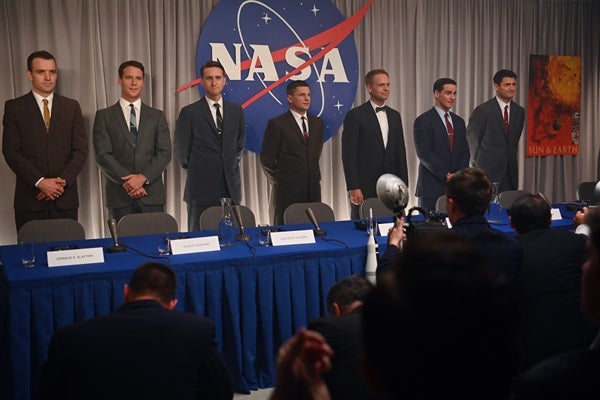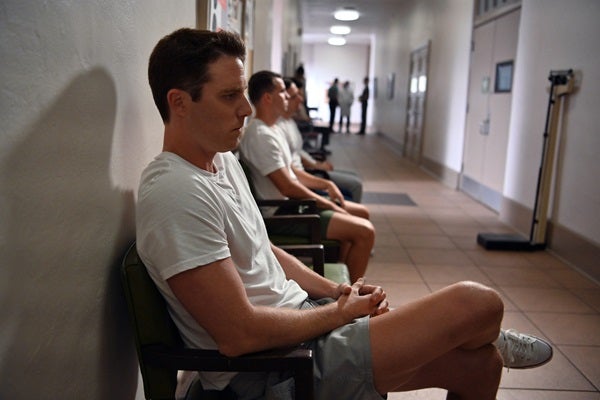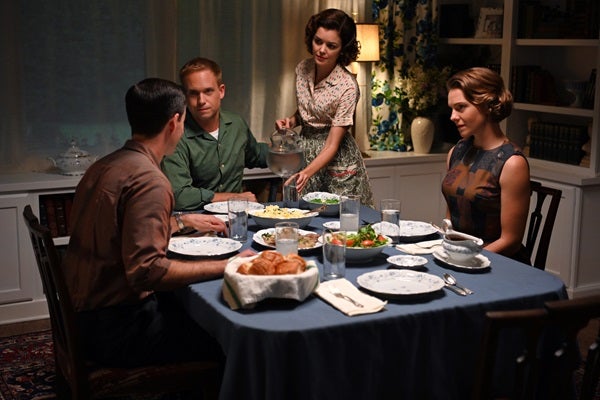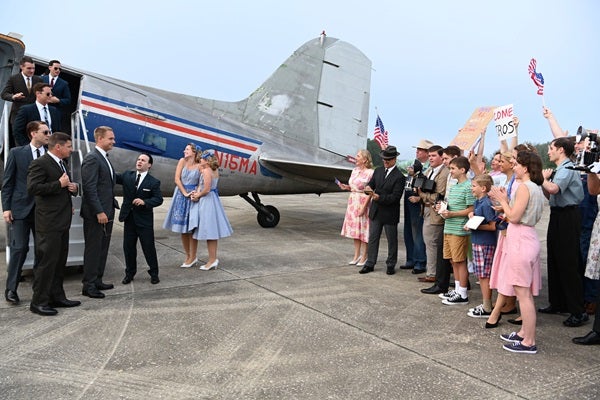The new National Geographic miniseries about Project Mercury,
The Right Stuff, is based on Tom Wolfe’s 1979 book and the 1983 film.
Astronomy watched the first two episodes, which dropped last Friday on
Disney Plus. Keep reading for our take on the series so far, and check out more coverage from our sister publication,
Discover.
Setting the tone
The new miniseries makes its tone clear from the opening scene. Astronauts John Glenn and Alan Shepard are eating breakfast on the morning of the first U.S. crewed spaceflight. It’s a historic occasion — but the mood is positively icy. “You went behind my back,” snarls Shepard to Glenn. “I know all about it.”
This scene sets up the rivalry between the two men as one of the key storylines throughout the eight-episode miniseries.
Fair enough — every remake has to find its own angle. Tom Wolfe wrote his 1979 book, which portrayed the test pilots as some of the last American heroes, as a reaction against the anti-heroism of the Vietnam era. Philip Kaufman’s 1983 film adaptation took a more probing tone, highlighting the sublime and the farcical of the early space program, and amplifying the contrast between the stoic, soulful test pilot Chuck Yeager — the first man to break the sound barrier — and his fellow flyboys who went to work for NASA and became the focus of one of the greatest PR machines in human history.
The new series cuts Yeager entirely, focusing on the Mercury astronauts and dialing up the interpersonal drama. It seems to cast them as neither heroes nor anti-heroes, but merely human. The result — through the first two episodes, at least — plays the space program as a workplace soap opera or a reality show where everyone is competing to get off this rock.
The story so far (spoiler alert)
“Sierra Hotel”
In Episode 1, “Sierra Hotel”, we meet the astronauts-to-be as the nation’s top test pilots are called to a meeting at NASA Langley Research Center where Bob Gilruth, head of NASA’s Space Task Group, and future flight controller Chris Kraft are heading the selection of the U.S.’ first class of astronauts.
Some we get to know better than others. Patrick J. Adams as John Glenn is as charismatic as Ed Harris was in the original film, but we also see flashes of undisguised ambition as he goes through the process, suggesting something darker beneath his charm and decency. Alan Shepard (Jake McDorman) is his foil, the stereotypical fighter pilot jock — an emotionally stunted womanizer and lover of fast cars.
Gordon “Gordo” Cooper (Colin O’Donoghue) is a test pilot with a stain on his conscience after a fellow pilot dies in an accident on a joint training flight. On top of that, he’s living a lie: He and his wife, Trudy, had previously separated, but he had convinced her to move back in with him to prove to NASA that he is an upstanding family man. This was a mere (true) detail in Wolfe’s book — but here it becomes the psychological foundation of his character, lending a Don Draper-esque air to proceedings.
In scenes that recall the original film, Glenn, Shepard, Cooper, and four others — Deke Slayton, Gus Grissom, Scott Carpenter, and Wally Schirra — survive being subjected to a dizzying array of medical procedures and protuberances and are ultimately chosen for the Mercury program.
“Goodies”
In Episode 2, “Goodies,” we see the mythmaking of the astronauts in full swing. The episode introduces John “Shorty” Powers (a perfectly cast Danny Strong), the legendary NASA public affairs officer. He immediately sends all the astronauts on a nationwide PR blitz to shore up the flagging support for the expensive project in Congress, with amusing results.
Back at home, Cooper’s mask of domestic stability is threatened by a local reporter searching for a scoop with, er, questionable ethics, walking into his home unannounced and tailing his daughter on her way to school.
The emotional heart of the episode comes when Glenn and his wife, Annie, invite Gordo and Trudy to dinner. While John tries to give Gordo advice on handling the media, Trudy — herself a licensed pilot — tells Annie about her own aeronautical ambitions in a scene that (finally) gets the series past the Bechdel test.
Glenn calls upon the services of an agent, Leo DeOrsey, to broker a media deal for the astronauts. They sell exclusive rights to their life stories to Life magazine, earning each of them $24,000 per year and earning Glenn the thanks of his peers. (This is a bit of creative license; in real life, according to Wolfe, DeOrsey was a tax lawyer recruited by NASA.)
Life wants to make them heroes and promises each astronaut full editorial control of their own story. “You get the last word on all of it,” says features reporter Loudon Wainwright, Jr. (Josh Cooke).
In the second half of the episode, the setting shifts to Florida, the nascent Space Coast, and the fabled Hangar S, which would become the nerve center for the burgeoning program. The living quarters are in rough shape when the astronauts first show up, prompting Shepard to exercise some leadership of his own — he books a motel with a pool and tiki bar as a replacement. He bolsters his standing even further by securing perhaps the most famous astronaut perk of all: free Corvettes from a local dealer, who knows the cars will more than pay for themselves in exposure just by being associated with the up-and-coming star voyagers.
Our take
If this all sounds somewhat mundane to you, you’re right. For the cineaste, the first two episodes never hit the sublime notes of the original film — like its meeting of a cowboy and a Bell X-1 rocket plane in the desert. Likewise, don’t expect the attention to technical detail of spaceflight that Ron Howard demonstrated in Apollo 13.
But to be fair, the miniseries isn’t trying to. It wants to examine the human relationships in its source material more critically. To Wolfe, Cooper convincing Trudy to come back home to play the role of the astronaut’s wife was just part of his legend. In the new series, the divide between fact and facade invites the viewer to question the entire enterprise and what it meant to the nation.
We’ll be back later with our impressions of the full series after it airs, but for now here are some quick takes:
- Potentially one of the best decisions is the inclusion of a young, wet-behind-the-ears Glynn Lunney (Jackson Pace), who would later become a revered flight director at Mission Control during the Gemini and Apollo programs. He played a key role in managing Apollo’s 13 crisis in its most desperate hour as its crew and controllers improvised a way to refashion the lunar module as a lifeboat (a role that was criminally overlooked in Howard’s 1995 film).
Here, we get to see Lunney as an earnest new hire struggling to please his tough bosses (Gilruth and Kraft). This is — at least in its broad circumstances — true to life: Lunney was one of NASA’s original employees, having worked for its predecessor, NACA, as an undergraduate. At just 21, he was the youngest member of the Space Task Group. Here’s hoping we see more of him as the series goes on.
-
Alan Shepard did have a penchant for Corvettes, and Jim Rathmann was the Florida Chevrolet dealer who started providing them to astronauts and eventually convinced General Motors to formalize the program. That much is true in the scene where the marketing-savvy Rathmann greets Shepard on his lot.
The timing is massaged slightly, though — GM didn’t provide Shepard the first car under the program until after his first spaceflight in 1961. And there’s something else off about the scene: in real life, a gearhead like Shepard would have recognized Rathmann on the spot. That’s because Rathmann was no ordinary car salesman — he was one of the top race car drivers of his era. (He finished second in the Indianapolis 500 in 1957 and 1959, and would go on to win the race in 1960.)













